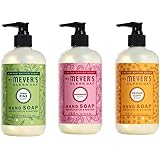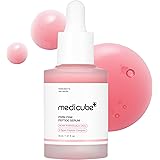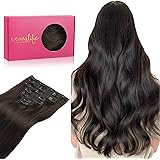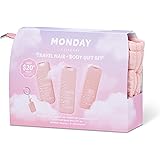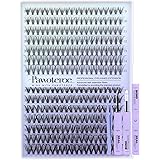Navigating the world of skincare can sometimes feel overwhelming, with countless products and confusing instructions leaving many feeling unsure where to begin. However, establishing a consistent daily skincare routine is a fundamental step toward achieving and maintaining healthy, radiant skin. This accompanying article is designed to complement the visual demonstration above, providing a comprehensive guide to understanding the essential steps in a proper skincare regimen.
A well-structured daily skincare routine is invaluable; it actively supports skin health, addresses specific concerns, and protects the skin from environmental stressors. By systematically applying products in the correct order, their efficacy is significantly enhanced, allowing ingredients to penetrate properly and deliver optimal benefits to the complexion.
Establishing Your Essential Daily Skincare Routine
A fundamental understanding of your skin type is considered the cornerstone of an effective skincare routine. Determining whether skin is oily, dry, combination, sensitive, or normal allows for a more targeted selection of products, ensuring maximum benefits are received. This personalized approach prevents irritation and promotes a balanced complexion.
Understanding Different Skin Types and Their Needs
Firstly, oily skin types typically benefit from lightweight, non-comedogenic formulations that help manage excess sebum production. Gel cleansers and oil-free moisturizers are often recommended for these individuals. Secondly, dry skin requires rich, hydrating products that restore the skin’s moisture barrier and alleviate feelings of tightness or flakiness, favoring cream cleansers and emollients.
Thirdly, combination skin, characterized by an oily T-zone and drier cheeks, often requires a more balanced approach, sometimes using different products for different areas. Gentle products that do not strip moisture but still control oil are frequently sought. Finally, sensitive skin benefits from fragrance-free, hypoallergenic formulations to minimize potential irritation and maintain skin comfort.
Morning Skincare Routine: Preparing Your Skin for the Day
The morning skincare routine is primarily focused on protection and prevention, preparing the skin to face environmental aggressors throughout the day. It involves fewer steps than the evening routine but each is considered crucial for maintaining skin integrity. Consistency in this daily practice yields significant long-term benefits.
1. Gentle Cleansing: Starting Fresh
Upon waking, a gentle cleanser is typically applied to remove any overnight accumulation of oils and product residue. This step is vital for creating a clean canvas upon which subsequent products can be effectively absorbed. A mild formulation is generally preferred to avoid stripping the skin of its natural moisture.
Foaming cleansers are often chosen for oily or combination skin, while creamy or milky textures are favored by those with dry or sensitive complexions. The cleansing process should be performed with lukewarm water and soft, circular motions, ensuring thorough but gentle removal of impurities.
2. Antioxidant Serum: Boosting Protection
The application of an antioxidant serum is considered an indispensable step in a comprehensive morning skincare routine. Vitamin C serums are particularly popular due to their ability to neutralize free radicals, which are generated by UV exposure and pollution. This protective action helps prevent premature aging and improves skin brightness.
A few drops of serum are usually patted onto the clean, dry face and neck, allowing for complete absorption before proceeding. Consistent use of such a serum has been shown to contribute significantly to skin health and resilience against daily stressors.
3. Moisturizer: Hydration and Barrier Support
A suitable moisturizer is then applied to lock in hydration and support the skin’s natural barrier function. This essential product helps to keep the skin supple, soft, and protected from moisture loss throughout the day. The choice of moisturizer should be dictated by individual skin type and environmental conditions.
Lighter, gel-based moisturizers are often selected by those with oilier skin, while richer creams are typically preferred by individuals with drier complexions. Proper moisturization is key to maintaining a healthy and balanced appearance for the skin.
4. Sunscreen (SPF): The Non-Negotiable Shield
The most critical step in any morning skincare routine is considered the application of a broad-spectrum sunscreen with an SPF of 30 or higher. This protective layer actively defends the skin against harmful UVA and UVB rays, which are primary contributors to premature aging, sun damage, and skin cancer. Sunscreen should be applied generously as the final step before makeup.
Even on cloudy days or when spending time indoors near windows, UV radiation can still impact the skin. Therefore, daily sunscreen use is not merely a recommendation but a vital component of long-term skin health. This crucial protective measure safeguards the complexion effectively.
Evening Skincare Routine: Repair and Regeneration
The evening skincare routine is primarily dedicated to repair, regeneration, and addressing specific skin concerns while the body rests. This sequence is typically more extensive than the morning routine, as it focuses on removing the day’s accumulated impurities and maximizing the skin’s natural overnight repair processes.
1. Double Cleansing: Thorough Impurity Removal
Double cleansing is widely recommended to effectively remove makeup, sunscreen, and environmental pollutants that accumulate throughout the day. Firstly, an oil-based cleanser or balm is used to dissolve oil-soluble impurities without stripping the skin. This initial step is considered highly effective for breaking down stubborn products.
Secondly, a water-based cleanser is then applied to wash away any remaining residue and cleanse the skin more deeply. This two-step process ensures a thoroughly clean canvas, allowing subsequent treatment products to penetrate more efficiently. The benefits of this method are widely acknowledged for achieving a truly pristine complexion.
2. Toning: Balancing and Preparing
After cleansing, a toner is often applied to rebalance the skin’s pH levels and prepare it for the absorption of active ingredients. Modern toners are typically alcohol-free and contain beneficial ingredients such as humectants or gentle exfoliants, depending on the formulation. These help to calm and hydrate the skin.
A small amount of toner is usually applied to a cotton pad and gently swept across the face, or it can be patted directly onto the skin with clean hands. This step ensures the skin is optimally receptive to serums and treatments that follow in the nightly skincare routine.
3. Treatment Serums: Targeted Solutions
The evening is an ideal time to incorporate treatment serums that address specific skin concerns such as acne, hyperpigmentation, fine lines, or dehydration. Ingredients like retinoids (Vitamin A derivatives), alpha hydroxy acids (AHAs), beta hydroxy acids (BHAs), or hyaluronic acid are frequently utilized during this step. These powerful ingredients facilitate targeted improvements.
Serums are typically applied to the face and neck after toning, allowing a few minutes for complete absorption before the next product is introduced. The consistent application of these concentrated formulations actively supports the skin’s restorative processes overnight. Regular use over time is known to yield significant visible results for various complexion challenges.
4. Eye Cream: Delicate Area Care
The skin around the eyes is considerably thinner and more delicate than other areas of the face, making it particularly susceptible to signs of aging and fatigue. An eye cream is specifically formulated to address concerns such as fine lines, wrinkles, puffiness, and dark circles in this sensitive region. Its use is considered an important part of a complete skincare routine.
A small amount of eye cream is gently patted around the orbital bone using the ring finger, which applies the least pressure. Regular application of an eye cream helps to hydrate, protect, and maintain the youthful appearance of the eye area effectively. This careful approach prevents unnecessary strain on this fragile skin.
5. Moisturizer or Night Cream: Final Seal and Nourishment
The final step in the evening skincare routine involves applying a nourishing moisturizer or a dedicated night cream. These products are often richer than their daytime counterparts, providing intensive hydration and supporting the skin’s natural overnight repair process. They help to lock in all the previously applied treatment products.
A generous layer of moisturizer is applied to the face and neck, allowing its active ingredients to work throughout the night. This final step ensures that the skin remains hydrated and protected, waking up feeling soft, supple, and refreshed. A consistent nightly skincare routine promotes optimal skin health and appearance.


